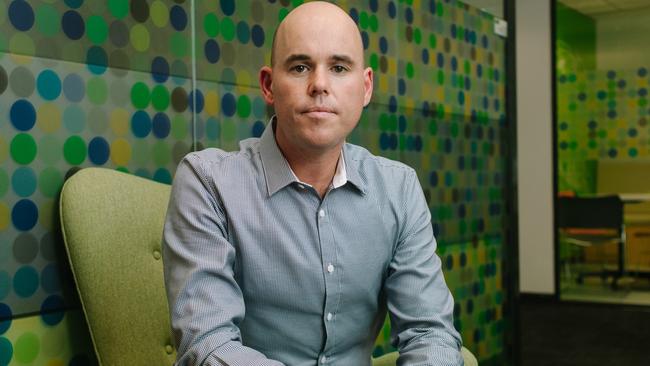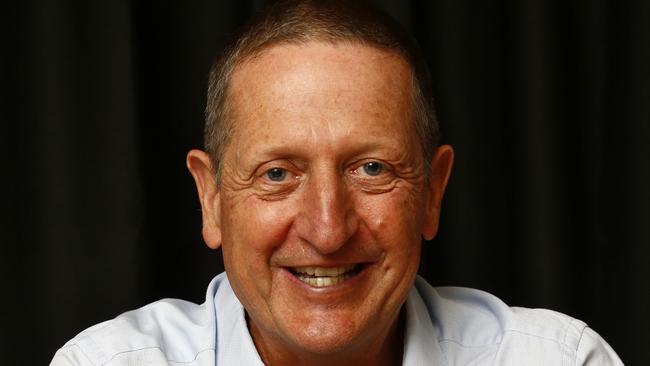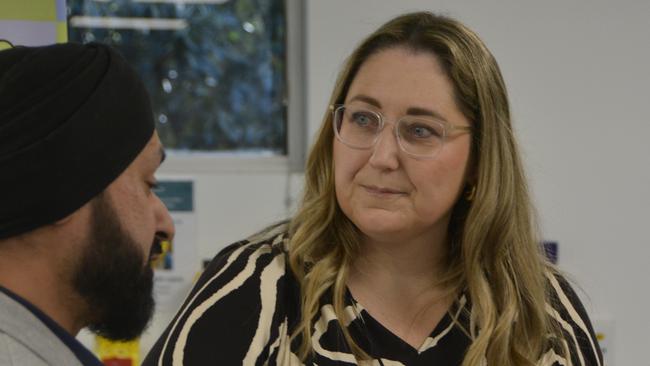Headspace in hospitals a national blueprint: Alfred Health
Mental health charities built into hospitals are willing to risk more for their patients and unify state and federal health resources, a leading hospital has appealed.

One of Victoria’s most prestigious public hospitals believes clinics should lead the charge on youth mental health reform and bridging the gap between state and federal systems amid a systematic overhaul.
A study by the University of Sydney in early February found leading charity headspace was “a victim of its own success”, having become so overloaded with cases that only one-third of the young people using it were improving after receiving care, while the rest saw no improvement or experienced further deterioration.
The Albanese government first signposted reforms to headspace in its 2023-24 MYEFO, and The Australian understands a new funding model for the youth mental health charity is under discussion as part of these reforms.
Alfred Health, the administrator behind Melbourne’s public Alfred Hospital, has swung out in favour of headspace, albeit using a rare integrated model its hospital pioneered, arguing the attachment of mental health services to hospitals allowed patients to be better directed between both institutions.
Nationally, headspace integrated clinics are the minority in bricks-and-mortar offerings, being 11 of the 169 clinics nationwide.
Alfred Health youth psychiatrist Paul Denborough described the partnership as a “virtuous cycle” that took mental health services with overlapping purviews into “partnership, rather than being rival or siloed”.

“Now it’s better not just for triaging … if someone’s deemed to be risky or hard to treat in headspace, we either get one of our doctors to see them and support the person to stay within headspace, or we take (them into the hospital),” he said.
“That way headspace is more likely to stick their neck out and see some more risky people. If you’re worried that you’re going to be left with a situation you can’t manage – which I think is happening in quite a few headspace centres around Australia – then you’re not going to risk it for them.
“There’s two health systems, in a way; there’s a federal system and a state system. The problem is young people don’t easily fit between the two systems, but if you’re able to integrate them, which we can, it’s a fantastic system.”
Alfred Health runs the Elsternwick, Bentleigh and Syndal headspace centres. Headspace Elsternwick is the busiest such centre in Australia.
“Many of the public mental health services are putting their hand up to run a headspace … and I don’t think it’s a unilateral thing,” Mr Trethowan said. “I don’t think we have to move every headspace to be operated by public mental health services.
“We’re absolutely open for always evolving and adapting the way which headspace is implemented across Australia.”
He argued such integration could preface a better mental health system that straddled state and federal investment.
“What we’re looking for most is for the states and the federal government to agree on a funding model for headspace and there to be a closer integration between the headspace service and the public mental health services,” he said.
“The funding model of headspace has been broken now for arguably five to 10 years.”
University of Sydney psychiatrist Ian Hickie said the fundamental problems with headspace could not be fixed through a funding injection, describing a “chasm” of care between state and federal infrastructure correlating with the severity of presentations.
Those with more minor issues are likely to enter federal systems such as headspace or a primary care provider, while severe and chronic cases will present to state-run hospitals and institutions.
When a case fits neither category perfectly, they run the risk of presenting to neither, driving the argument for better integration to “mend” the gap.

“The politics is so retail,” Professor Hickie said. “Now in a federal election every member … wants to open a headspace centre in the main street of every town, no matter how small. Every government wants to be seen to be doing something.
“Private NGOs and other providers of headspace services are under no obligation to actually work with the local health districts … but all those NGOs don’t have the back-end … They’re often missing the fundamental capabilities of running an effective healthcare agency.
“You end up with Monsters Inc, there’s thousands and thousands of doors revolving but no one’s sure what’s behind each one. It’s just not the way to organise care.”
Mental Health Assistant Minister Emma McBride pointed to a recent $2.6m investment in consultation on fit-for-purpose models for youth mental health services.
“The Albanese Labor government has invested more than $300m this financial year to strengthen and expand headspace, Australia’s trusted national provider of youth mental health care and support,” Ms McBride said.
“We are rapidly expanding the national headspace network, to 177 services by 2026, delivering care for more young Australians closer to home.”




To join the conversation, please log in. Don't have an account? Register
Join the conversation, you are commenting as Logout